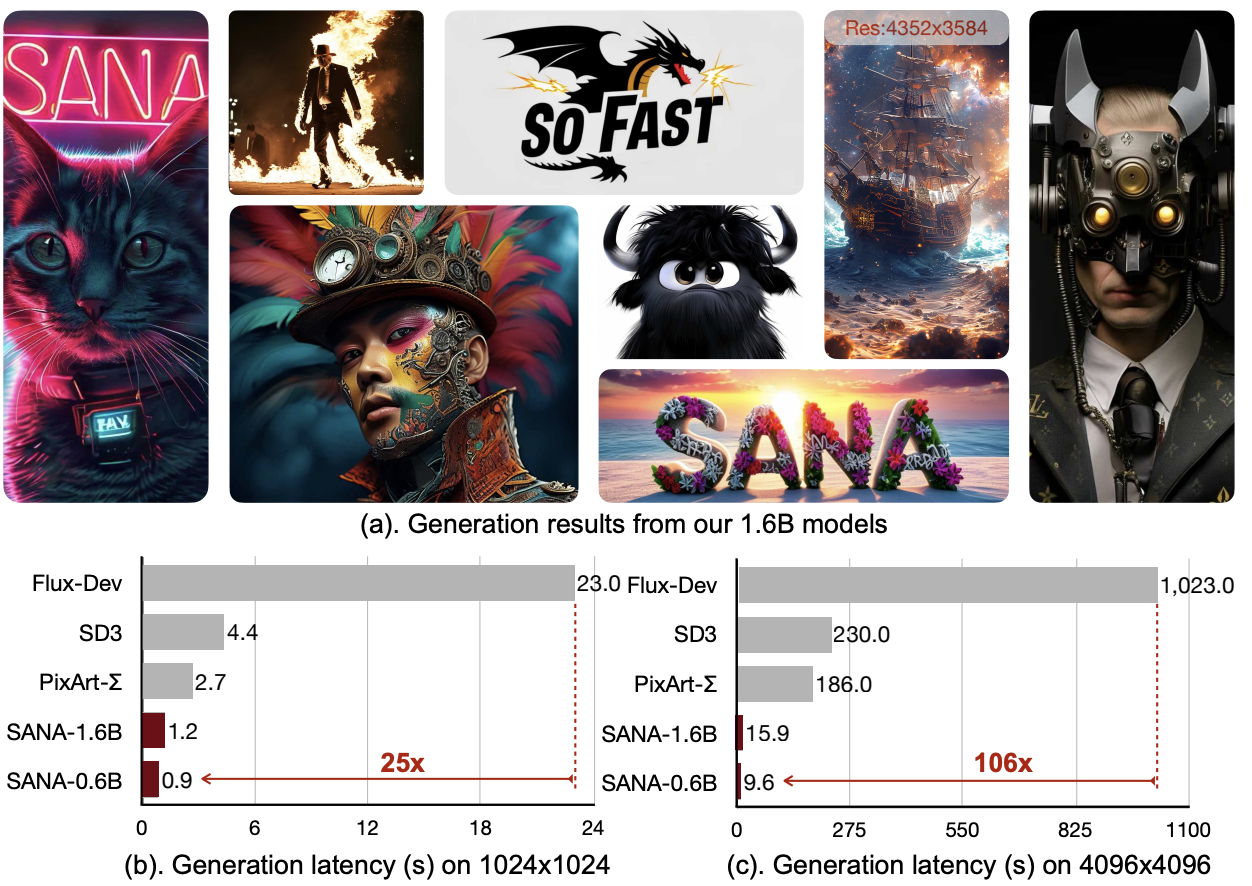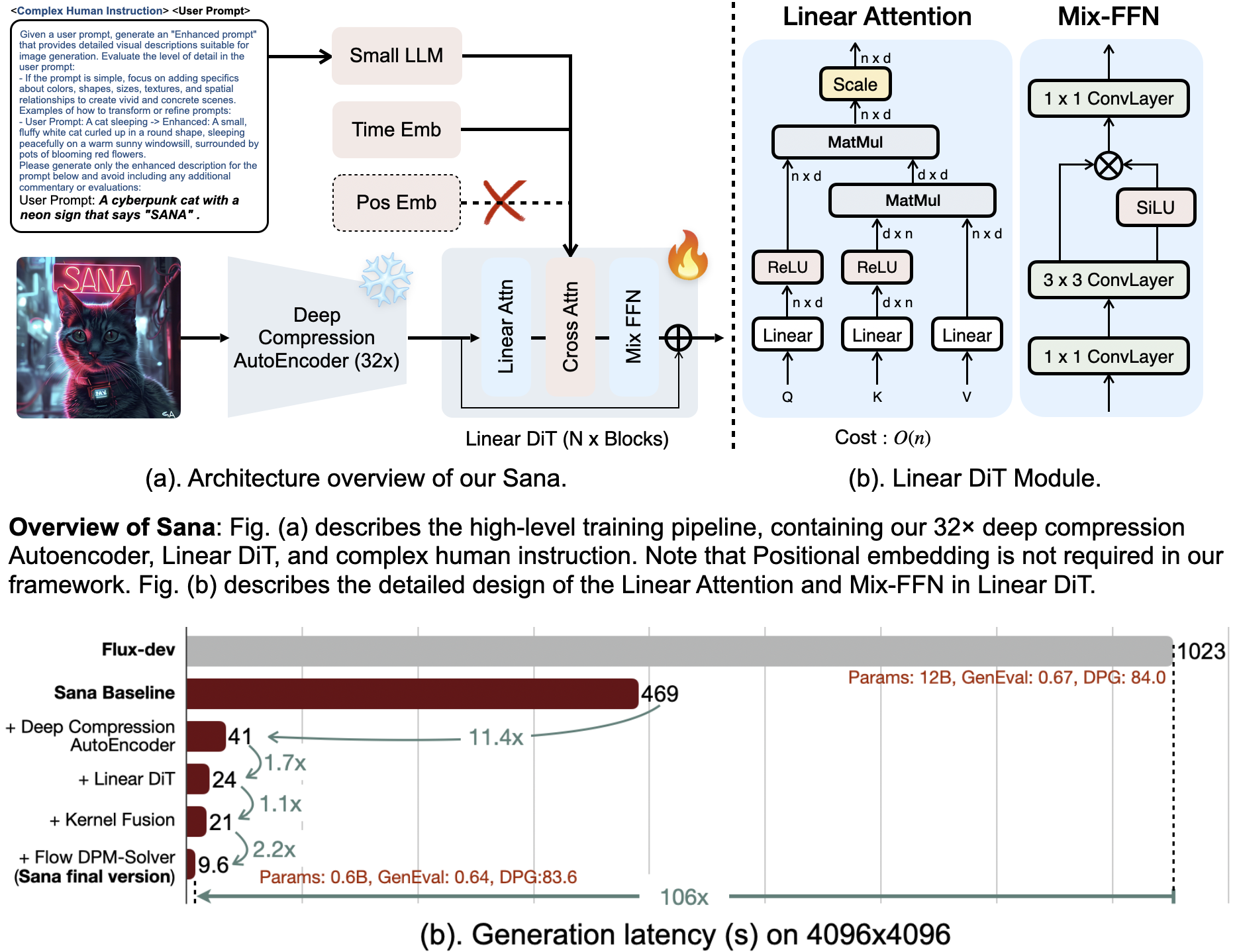library_name: sana
tags:
- text-to-image
- Sana
- 512px_based_image_size
language:
- en
- zh
base_model:
- Efficient-Large-Model/Sana_600M_512px
pipeline_tag: text-to-image

🐱 Sana Model Card

Model

We introduce Sana, a text-to-image framework that can efficiently generate images up to 4096 × 4096 resolution. Sana can synthesize high-resolution, high-quality images with strong text-image alignment at a remarkably fast speed, deployable on laptop GPU.
Source code is available at https://github.com/NVlabs/Sana.
Model Description
- Developed by: NVIDIA, Sana
- Model type: Linear-Diffusion-Transformer-based text-to-image generative model
- Model size: 1648M parameters
- Model resolution: This model is developed to generate 512px based images with multi-scale heigh and width.
- License: CC BY-NC-SA 4.0 License
- Model Description: This is a model that can be used to generate and modify images based on text prompts. It is a Linear Diffusion Transformer that uses one fixed, pretrained text encoders (Gemma2-2B-IT) and one 32x spatial-compressed latent feature encoder (DC-AE).
- Resources for more information: Check out our GitHub Repository and the Sana report on arXiv.
Model Sources
For research purposes, we recommend our generative-models Github repository (https://github.com/NVlabs/Sana),
which is more suitable for both training and inference and for which most advanced diffusion sampler like Flow-DPM-Solver is integrated.
MIT Han-Lab provides free Sana inference.
- Repository: ttps://github.com/NVlabs/Sana
- Demo: https://nv-sana.mit.edu/
🧨 Diffusers
Uses
Direct Use
The model is intended for research purposes only. Possible research areas and tasks include
Generation of artworks and use in design and other artistic processes.
Applications in educational or creative tools.
Research on generative models.
Safe deployment of models which have the potential to generate harmful content.
Probing and understanding the limitations and biases of generative models.
Excluded uses are described below.
Out-of-Scope Use
The model was not trained to be factual or true representations of people or events, and therefore using the model to generate such content is out-of-scope for the abilities of this model.
Limitations and Bias
Limitations
- The model does not achieve perfect photorealism
- The model cannot render complex legible text
- fingers, .etc in general may not be generated properly.
- The autoencoding part of the model is lossy.
Bias
While the capabilities of image generation models are impressive, they can also reinforce or exacerbate social biases.






